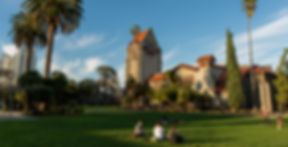

Embedded Extrusion Based Bioprinting of Vascular Graft for Treatment of Abdominal Aortic Aneurysms
Sonja Durr - Biomedical Engineering Department, SJSU;
Diego Oliva - Biomedical Engineering Department, SJSU;
Anoushka Lakshmi - Biomedical Engineering Department, SJSU
Anna Buryachenko - Biomedical Engineering Department, SJSU
Dr. Lin Jiang
Technical Advisor:
Annually, 200,000 people in the U.S. are diagnosed with Abdominal Aortic Aneurysms (AAA). A ruptured AAA carries a mortality rate of 85%, where 66% of deaths occur before reaching the hospital, emphasizing the need for treatment before rupture. Currently, a ruptured AAA is the 25th leading cause of death in the country, with two forms of treatment: open and endovascular repair (EVAR). Both repairs require synthetic vascular graft implantation, at the site of the aneurysm via surgery or stent, and are made of e-PTFE or polyethylene terephthalate (Dacron®). During the procedure, grafts are used to replace the ruptured aortic wall and re-establish healthy vascularisation through the aorta. Common graft complications include anastomotic pseudoaneurysm, graft thrombosis, and graft-enteric erosion/fistula. This issue guides our project to minimize graft-related complications by providing an alternative to synthetic grafts through 3D bioprinting methods and host-obtained cell cultures. Specifically, tissue-engineered vascular grafts (TEVG) present the possibility of developing grafts with proper biocompatibility, mechanical properties, and the maintenance of healthy blood flow. Utilizing an extrusion-based bioprinting method known as freeform reversible embedding of suspended hydrogels (FRESH), TEVGs, consisting of chemically crosslinked collagen, can take on the proper tubular structure. The collagen allows the scaffold to mimic natural aorta properties, such as tensile strength, burst pressure, and biocompatibility. Utilizing published data on bioink properties allows for computer simulations to confirm the advantages of crosslinked collagen before in vitro testing and further development with host-obtained endothelial cell cultures.